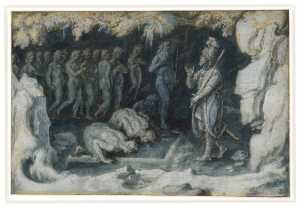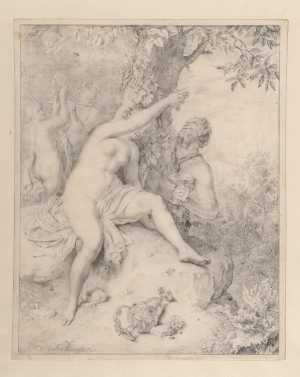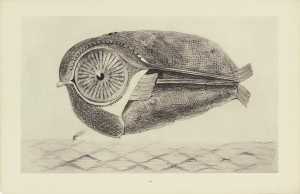Like his Italian contemporaries Michelangelo and Leonardo da Vinci, Albrecht Dürer was a versatile and influential Renaissance artist. He travelled widely, visiting among other places the Netherlands and Northern Italy. In the course of those journeys, he encountered the principles of humanistic philosophy and the innovative artistic idiom of the Early Renaissance. Dürer is best known for his woodcuts and engravings. Prints of his work were widely distributed and had a profound influence on other artists. Between 1507 and 1509, he painted a large panel depicting the Assumption of the Virgin and the Coronation of the Virgin for his patron Jacob Heller, a wealthy textile merchant. It was to form part of an altarpiece for a Dominican church in Frankfurt, but the altarpiece has unfortunately been lost. From his correspondence with Heller, we learn that Dürer spent more than a year preparing the work. He made several studies for various parts of the painting. They were all drawn in the same manner, with a brush and black ink, heightened with white, on paper with a coloured ground. Twenty of these studies have survived, including this famous drawing. It shows the two feet on which Dürer based the feet of the kneeling apostle Paul, at lower right in the centre panel of the Heller Altarpiece. In the drawing, we also see the hem of a cloak over the right foot. [text: Albert Elen]

Specifications
| Title | Study of Two Feet for the Apostle Paul in the Heller Altarpiece |
|---|---|
| Material and technique | Brush in black ink, gray wash, heightened with white, on green prepared paper |
| Object type |
Drawing
> Two-dimensional object
> Art object
|
| Location | This object is in storage |
| Dimensions |
Height 176 mm Width 216 mm |
|---|---|
| Artists |
Draughtsman:
Albrecht Dürer
|
| Accession number | MB 1958/T 24 (PK) |
| Credits | Acquired with the collection of D.G. van Beuningen, 1958 |
| Department | Drawings & Prints |
| Acquisition date | 1958 |
| Creation date | in circa 1508 |
| Collector | Collector / D.G. van Beuningen |
| Internal exhibitions |
Van Pisanello tot Cézanne (1992) De Collectie Twee - wissel I, Prenten & Tekeningen (2009) TEFAF - Collecting Collectors (2016) Rondom Fra Bartolommeo (2016) |
| External exhibitions |
Dürer (2013) Dürer e il Rinascimento Tedesco (2018) Museum Boijmans Van Beuningen @ Rijksmuseum (2023) |
| Material | |
| Object | |
| Technique |
Prepare
> Prepared
> Shaping techniques
> General technique
> Technique
> Material and technique
Prepare
> Prepared
> Shaping techniques
> General technique
> Technique
> Material and technique
Highlight
> Painting technique
> Technique
> Material and technique
Grey wash
> Washing
> Wash
> Drawing technique
> Technique
> Material and technique
|
| Geographical origin | Germany > Western Europe > Europe |
Do you have corrections or additional information about this work? Please, send us a message
All about the artist
Albrecht Dürer
Neurenberg 1471 - Neurenberg 1528
Albrecht Dürer received his first lessons from his father, who was a goldsmith. He subsequently became a pupil of the painter Michael Wohlgemut. Dürer...
Bekijk het volledige profiel






















